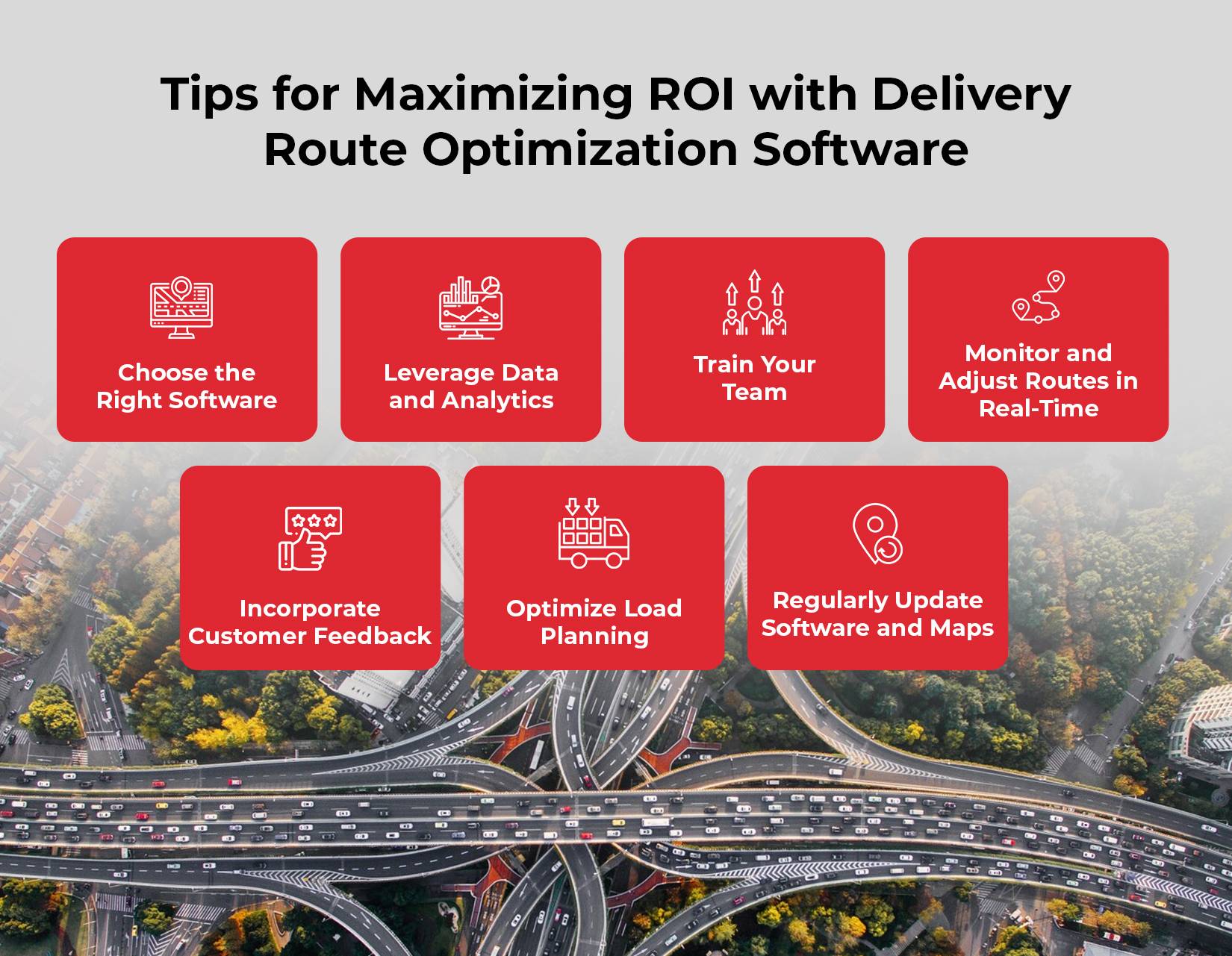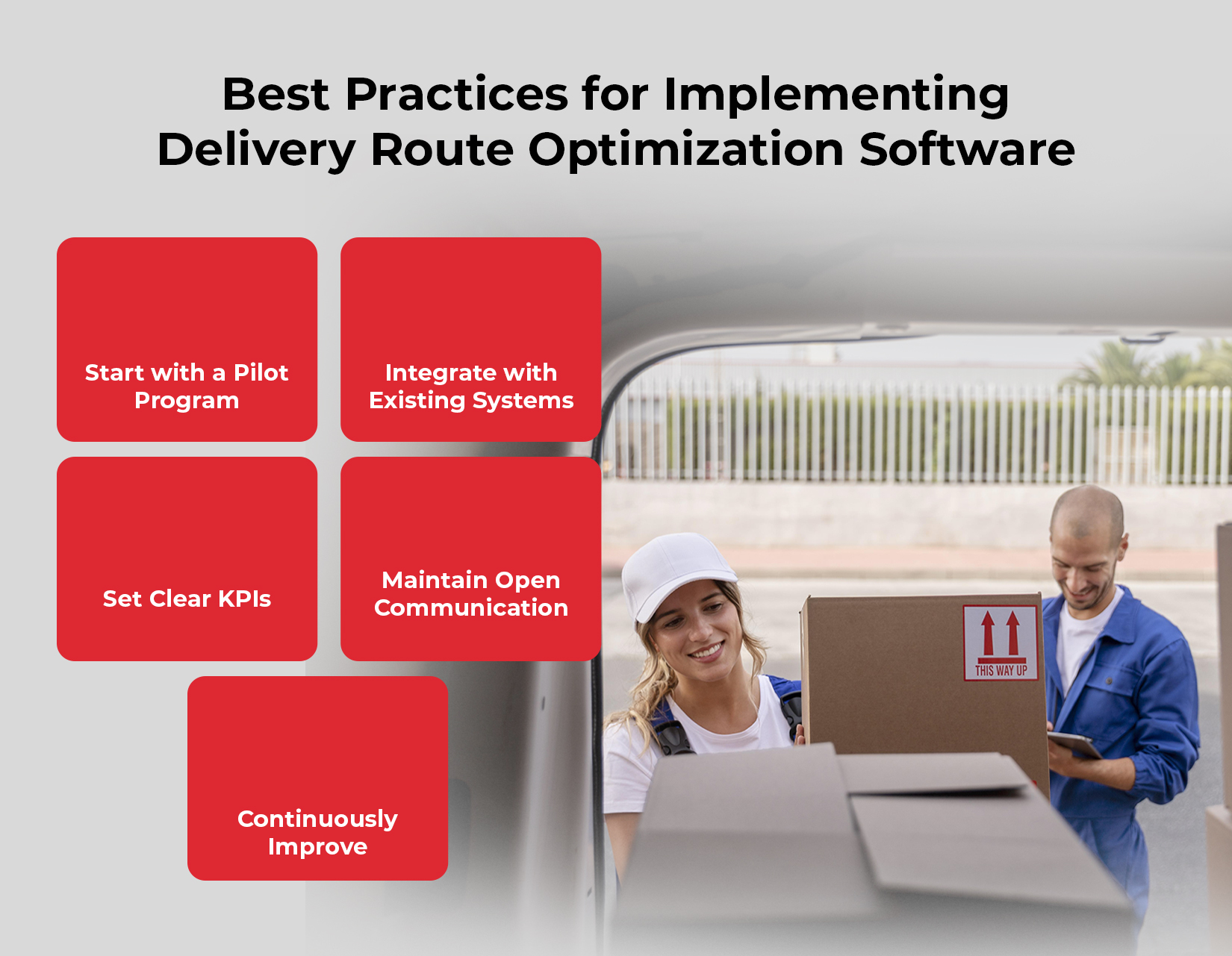In today’s fast-paced world, businesses are persistently searching for ways to enhance efficiency and reduce costs. One powerful tool that has gained prominence in recent years is delivery route optimization software. This software, also known as delivery route software, enables companies to plan efficient routes for their delivery vehicles, ensuring timely deliveries while minimizing fuel costs and other expenses. This blog will explore how to maximize ROI using delivery route optimization software, along with tips and best practices for implementation.
Understanding Delivery Route Optimization Software
Delivery route optimization software is a technological solution designed to plan the most efficient routes for delivery drivers. This software uses algorithms and real-time data to determine the quickest and most cost-effective routes, considering factors like traffic conditions, time and vehicle capacity. By optimizing delivery routes, businesses can save time, reduce fuel consumption, and improve customer satisfaction.
According to a study by the American Transportation Research Institute (ATRI), 40% of total delivery costs are related to fuel consumption and driver wages. By leveraging delivery route optimization software, businesses can significantly cut these costs and enhance overall operational efficiency.
Key Benefits of Delivery Route Software
There are multiple benefits of a delivery route optimization software. Below are a few key ones:
1. Reduced Operational Costs:
Route optimization software minimizes fuel consumption and reduces driver hours by calculating the shortest and most efficient routes. Companies have reported savings of up to 30% in fuel costs after implementing delivery route planning software.
2. Enhanced Customer Satisfaction:
Delivery route software ensures timely deliveries, which improves customer satisfaction. A survey by Capgemini revealed that 74% of customers are likely to stay loyal to a business that provides excellent delivery service.
3. Increased Delivery Capacity:
By optimizing routes, companies can increase the number of deliveries made per driver, enhancing overall delivery capacity without increasing the number of delivery vehicles.
4. Improved Decision-Making:
Delivery routing software provides real-time data and analytics, allowing managers to make informed decisions and respond quickly to any changes or disruptions in the delivery schedule.
Tips for Maximizing ROI with Delivery Route Optimization Software

To fully maximize ROI with delivery route optimization software, companies should consider the following tips and best practices:
1. Choose the Right Software:
Not all delivery route software is created equal. When selecting a solution, consider the size of your fleet, the complexity of your delivery routes, and the specific needs of your business. Look for software that offers features such as real-time tracking, automated route planning, and integration with other business systems.
2. Leverage Data and Analytics:
Utilize the data provided by your delivery routing software to gain insights into your delivery operations. Analyze patterns in delivery times, fuel consumption, and driver behavior to identify areas for improvement. Regularly reviewing this data can help you fine-tune your routes and improve efficiency.
3. Train Your Team:
Ensure that your drivers and delivery managers are well-trained in using the delivery route software. Proper training ensures that everyone understands how to use the software effectively, leading to better adoption and more efficient use of the tool.
4. Monitor and Adjust Routes in Real-Time:
Use delivery route planning software to monitor routes in real-time and make adjustments as needed. For example, if there is a traffic jam or road closure, the software can quickly recalculate the best route to avoid delays. This flexibility allows for more efficient deliveries and reduces the likelihood of missed delivery windows.
5. Incorporate Customer Feedback:
Encourage customers to provide feedback on their delivery experience. Use this feedback to identify areas for improvement and adjust your delivery routes accordingly. Satisfied customers are more likely to become repeat customers, which directly impacts your ROI.
6. Optimize Load Planning:
Effective load planning ensures that each vehicle is loaded to its maximum capacity without exceeding weight limits. Route delivery software can help optimize load planning by suggesting the best order for deliveries based on the vehicle’s capacity and delivery priorities. This reduces the number of trips required and saves both time and fuel.
7. Regularly Update Software and Maps:
Ensure your delivery route software is regularly updated with the latest maps and traffic information. This ensures that your routes are always optimized for current conditions, helping you avoid unnecessary delays and costs.
Best Practices for Implementing Delivery Route Optimization Software

Implementing delivery route optimization software can be a game-changer for many businesses. Here are few best practices to ensure a smooth implementation:
1. Start with a Pilot Program:
Before rolling out the software across your entire fleet, consider starting with a pilot program. This allows you to test the software in a controlled environment and make any necessary adjustments before full-scale implementation.
2. Integrate with Existing Systems:
Ensure that your delivery routing software can integrate seamlessly with your existing systems, such as your CRM, ERP, and inventory management systems. This integration ensures that all data is synchronized and that the software can operate at its full potential.
3. Set Clear KPIs:
Establish clear key performance indicators (KPIs) to measure the success of your delivery route optimization software. Common KPIs include fuel consumption, delivery times, customer satisfaction, and delivery costs. Regularly monitor these KPIs to gauge the effectiveness of the software and make adjustments as needed.
4. Maintain Open Communication:
Keep an open line of communication between your delivery team, management, and software provider. Encourage feedback from all stakeholders to identify any issues and make continuous improvements to the software and delivery processes.
5. Continuously Improve:
Delivery route optimization is not a one-time effort. Regularly review your delivery processes, analyze data, and make necessary adjustments to continuously improve efficiency and maximize ROI.
Check-out: Top 7 Delivery Routing and Delivery Route Optimization Software in 2024, to get an idea which software works best for you.
Conclusion
Investing in delivery route optimization software is a strategic decision that can significantly impact a company’s bottom line. By optimizing routes, reducing operational costs, and improving customer satisfaction, businesses can maximize their ROI and stay competitive in a rapidly changing market. By choosing the right software, leveraging data and analytics, and following best practices, companies can unlock the full potential of delivery route software and drive long-term success.
Following these tips and best practices, businesses can harness the power of delivery routing software to achieve greater efficiency, reduce costs, and enhance customer satisfaction. With the right approach, delivery route optimization software can be a valuable tool in maximizing ROI and driving business growth. Click on the red button below and book a demo with LogiNext to grow your business and maximize the ROI.
3





















